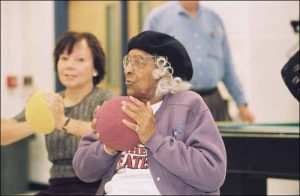The population of Americans older than age 65 is expected to reach 98.2 million by 2060, about double the U.S. Census Bureau estimate for 2015. Aging services organizations (ASOs) have plenty of catching up to do in the meantime as such organizations currently lag in both number and resources.
The authors of Giving and the Golden Years, a special report by Giving USA, show that ASOs — nonprofits providing services for aging populations such as food programs, adult day care, in-home service and nursing — make up just six percent of nonprofits. This compares to 24.5 percent, the number of American households currently headed by someone age 65 or older. The location of such services is also of potential issue. “Retirement states” such as Florida, Arizona, Texas, North Carolina and South Carolina all rank in the bottom quarter of states in terms of ASOs per capita. Great Plains states such as Minnesota, Nebraska, North Dakota and South Dakota rank near the top.
“This is a surprisingly small number of organizations meant to serve a large and still growing population of Americans,” said Aggie Sweeney, CFRE, Giving USA Foundation Board Chair. “We’re hoping the findings of this report will motivate the public to add aging services organizations to their annual giving portfolios.”
Funding is another challenge ASOs currently face. More than half of all ASOs operate with annual revenue of $500,000 or less. Nursing facilities and home-health services serve as the primary exception, with 30 percent operating with revenues of $10 million or more. The report shows that ASOs on both ends of the spectrum rely disproportionately on different types of contributions.
For instance, organizations such as food programs receive more than 82 percent of revenue through grants and contributions, including in-kind food donations. On the opposite end, nursing facilities and home health services receive less than five percent of total revenue through grants and contributions. Just 10 percent of ASOs have an endowment of any kind. Endowments are typically relied on by universities and hospitals to ensure funding for future programs, operations and services. Though the report points to philanthropy as a means that ASOs can grow and diversify revenue, it cautions that no quick fixes are on the horizon.
“Fundraising is not a simple or short-term solution,” said Laura MacDonald, CFRE, report co-author and Giving USA Foundation board member. “Long-term investments must be made by an organization’s leadership, management and the community at large. With patience and diligence, a sound fundraising program should eventually return $3 to $5 for every $1 invested.”










